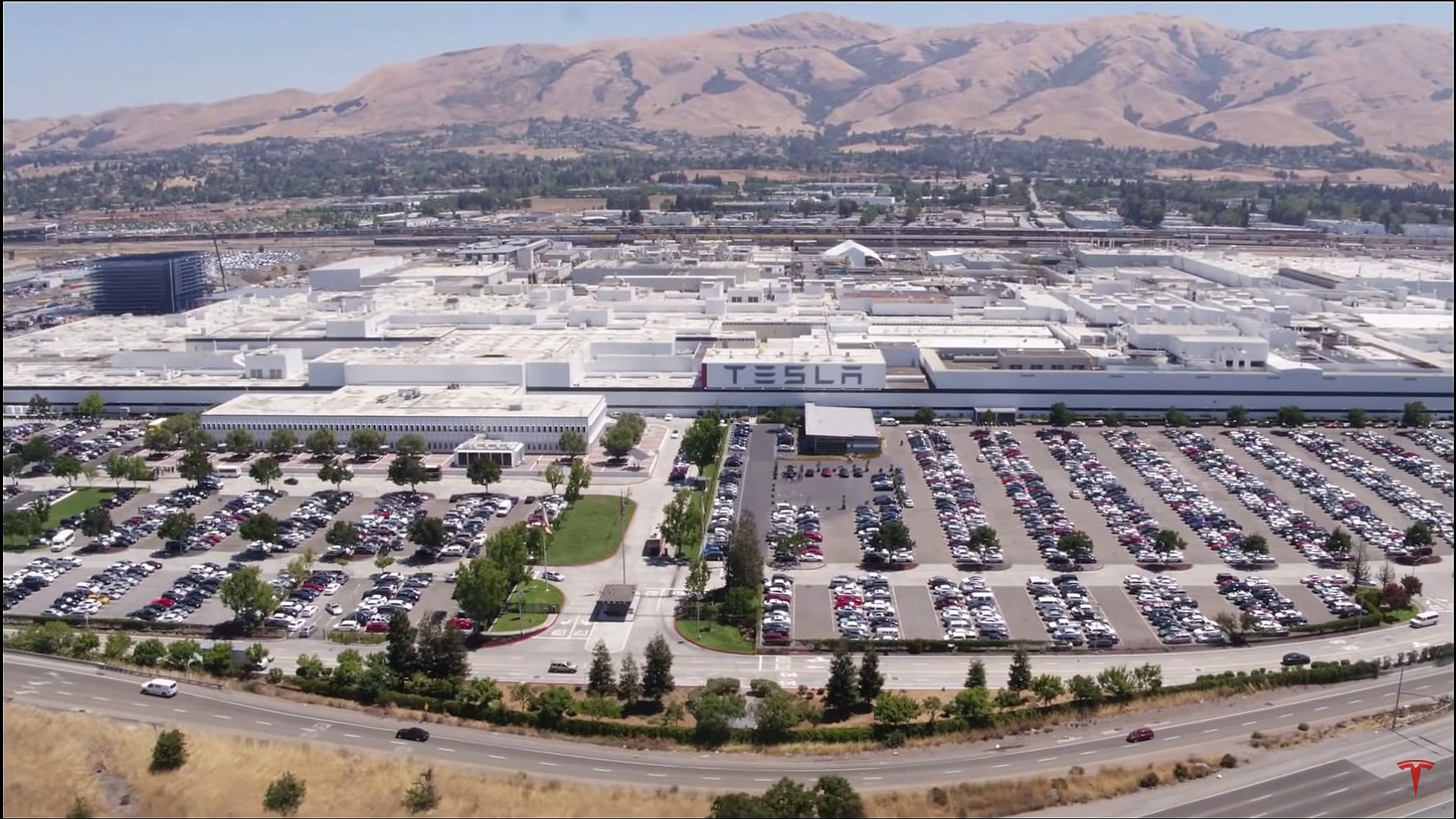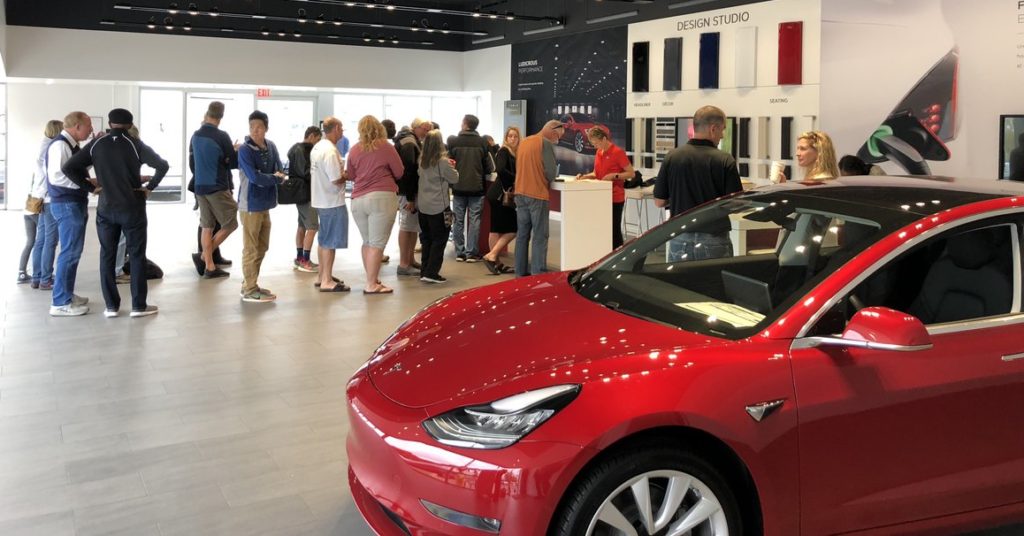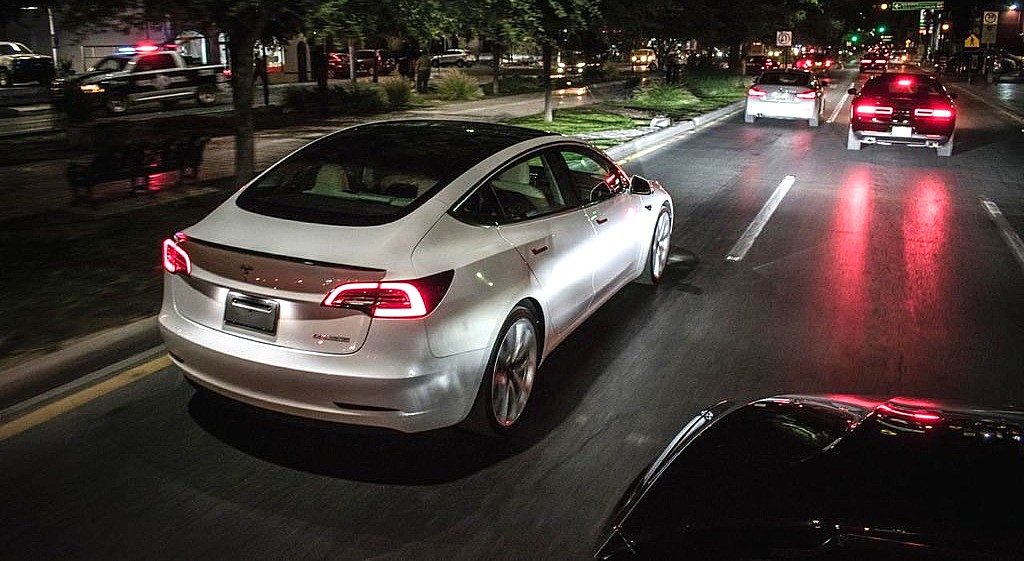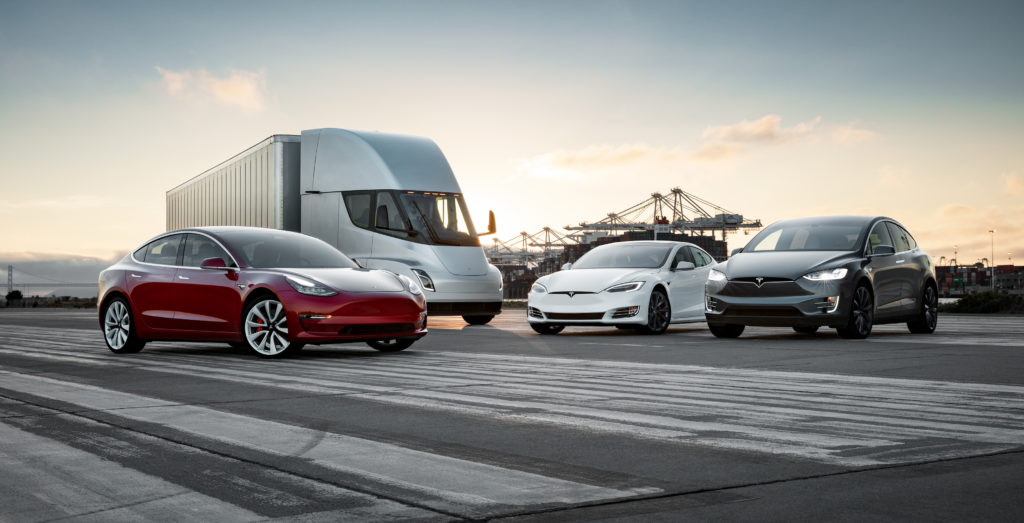

Investor's Corner
Tesla’s word of mouth strategy in focus: Why Elon Musk’s owner-based initiative works
Tesla’s (NASDAQ:TSLA) avoidance of traditional advertising initiatives is one of the most recognizable things about the company, yet it is one that has been questioned several times over the years by Wall Street analysts, investors and even avid fans. Yet, despite these questions, CEO Elon Musk’s answer has always been the same: Tesla does not do traditional advertising. Musk emphasized this point during the last earnings call too, stating that if Tesla would do some form of marketing, it would be strictly informational in nature.
“What we’re seeing is that word of mouth is more than enough to drive our demand in excess of production. We have no plans to advertise at this time. At some point in the future, we may do advertising not in the traditional sense but more to just inform people and make sure they are aware of the product, but not engage in the typical trickery that is commonplace in advertising,” Musk said.
In a conversation with Teslarati, investor and economist @Incentives101 explained that if one looks at Tesla’s word-of-mouth strategy from a mathematical perspective, it would seem that Elon Musk’s stern stance against traditional advertising may actually be well justified. Considering the manner that Tesla has been growing so far, the economist noted that “Elon is probably right. They don’t need advertisement and probably will never need it.” The following sections explains this point.

How Customers Learn About Tesla
There are generally three ways a new customer could learn about Tesla and its products: 1)Elon’s/Tesla goodwill, 2) customers’ own research, or 3) through an existing Tesla owner. Tesla relies heavily on current owners spreading the word and converting people they know into new electric car owners. Most people call this strategy the “Network Effect,” but the economist states that this is a misinterpretation.
“The Network Effect is technically applied to how a product increases its value from a network. The telephone is the most obvious example. One or two telephones in the world are useless, but the more there, are the more useful they become. In a way, you have to treat this like a disease. If you analyze (Tesla’s) strategy, you not only need information to flow. You need the information that changed hands to have an effect. In this case, the purchase of another Tesla. The most similar models to this strategy out there are how diseases spread,” the investor said.
These mathematical models try to predict how a disease will be spread considering different assumptions and variables. Among those variables are the number of susceptible individuals, of infected people and of recovered people, as well as the rate of contagion. For purposes of this illustration, information is equal to a virus and the main variables are the number of people that want to buy a car in that period of time within a target price range or TCO (susceptible individuals), the number of owners at the time (infected people), and the average number of people that an owner would convert in that period of time (contagion). This will be referred to in this article as the ‘T’ variable.

How Tesla spreads
The investor explains this further in the following statement. “The easiest way to understand this is the following. Imagine you’re looking at a decision tree. Each node is a new person with a Tesla in a period of time and how many nodes come out of that person is our ‘T.’ In each period of time that you’d want to measure, there are more assumptions that would need to be made. For example, an owner never ‘recovers’ so not only they ‘infect’ people but they will be contagious in perpetuity.
“Let’s analyze the spectrum of possible solutions. If T>=1, it would mean that information is flowing very efficiently and it will behave exponentially even if the time it takes for an owner to spread enough information to convert someone is relatively high. You need to consider that today, there are more than half a million owners. The faster the person transmits the ‘virus,’ the better,” he said.
There is no way to approximate these variables with the information available to us today. But recently, Tom Randall from Bloomberg released the findings of a study involving 5,000 Model 3 owners. According to the study’s results, 99% of Model 3 owners are pretty much satisfied with the vehicle, and they are willing to recommend the electric car to friends and family. A number of assumptions could be drawn from these results, as per the investor.
“If you consider what would be the worst scenario for Tesla, it would mean a very long time for contagion to spread, with the ‘T’ variable being very close to zero. But with the information provided in the Bloomberg report, there is a very high probability that ‘T’ is not close to zero at all. Instead, there’s a good chance that ‘T’ is probably very close to 1,” the economist said.

Growing Without Traditional Advertising
These assumptions would mean that Tesla can continue to grow without engaging in traditional advertising. Looking at Tesla’s history, we can see that this strategy or combination of strategies have worked. But is there an optimal time to have an information campaign? “It seems that the sooner, the better” the investor explained. “If you look at how this strategy functions, theoretically, the best time to have an information campaign is when they’ll have the least amount of owners and when they’ll increase production dramatically. So in theory this means in the next few months as Tesla continues to hit its stride with Model 3 and begin producing the Model Y, high volume vehicle that Elon Musk expects will outsell the Model S, X, and Model 3 combined. This doesn’t mean they need one, it just means it could be the best time,” he added.
It wouldn’t be accurate to assume that this strategy or combination of strategies is what creates demand. Any company could choose to have either this strategy or spend millions of dollars in advertising and demand wouldn’t necessarily go up or down. “Consumers need information to make decisions — it’s a very important factor — but demand is a function of several factors, particularly consumer preferences. Under perfect information, there is zero doubt demand for Tesla’s will rise as we explained in this note,” the investor noted.
“Tesla’s word-of-mouth strategy helps spread information, but if this product didn’t have a fundamental effect in consumers, it wouldn’t really matter. I’m confident that if banks or media had someone looking at this problem from the consumer side, we would never see a note about alleged ‘demand problems’ again. Tesla has never had a demand problem and data shows that they won’t face one. But they might face an information gap, particularly with how media misinforms consumers,” the economist said.
Disclosure: I have no ownership in shares of TSLA and have no plans to initiate any positions within 72 hours.
Elon Musk
Tesla analyst issues stern warning to investors: forget Trump-Musk feud

A Tesla analyst today said that investors should not lose sight of what is truly important in the grand scheme of being a shareholder, and that any near-term drama between CEO Elon Musk and U.S. President Donald Trump should not outshine the progress made by the company.
Gene Munster of Deepwater Management said that Tesla’s progress in autonomy is a much larger influence and a significantly bigger part of the company’s story than any disagreement between political policies.
Munster appeared on CNBC‘s “Closing Bell” yesterday to reiterate this point:
“One thing that is critical for Tesla investors to remember is that what’s going on with the business, with autonomy, the progress that they’re making, albeit early, is much bigger than any feud that is going to happen week-to-week between the President and Elon. So, I understand the reaction, but ultimately, I think that cooler heads will prevail. If they don’t, autonomy is still coming, one way or the other.”
BREAKING: GENE MUNSTER SAYS — $TSLA AUTONOMY IS “MUCH BIGGER” THAN ANY FEUD 👀
He says robotaxis are coming regardless ! pic.twitter.com/ytpPcwUTFy
— TheSonOfWalkley (@TheSonOfWalkley) July 2, 2025
This is a point that other analysts like Dan Ives of Wedbush and Cathie Wood of ARK Invest also made yesterday.
On two occasions over the past month, Musk and President Trump have gotten involved in a very public disagreement over the “Big Beautiful Bill,” which officially passed through the Senate yesterday and is making its way to the House of Representatives.
Musk is upset with the spending in the bill, while President Trump continues to reiterate that the Tesla CEO is only frustrated with the removal of an “EV mandate,” which does not exist federally, nor is it something Musk has expressed any frustration with.
In fact, Musk has pushed back against keeping federal subsidies for EVs, as long as gas and oil subsidies are also removed.
Nevertheless, Ives and Wood both said yesterday that they believe the political hardship between Musk and President Trump will pass because both realize the world is a better place with them on the same team.
Munster’s perspective is that, even though Musk’s feud with President Trump could apply near-term pressure to the stock, the company’s progress in autonomy is an indication that, in the long term, Tesla is set up to succeed.
Tesla launched its Robotaxi platform in Austin on June 22 and is expanding access to more members of the public. Austin residents are now reporting that they have been invited to join the program.
Elon Musk
Tesla surges following better-than-expected delivery report
Tesla saw some positive momentum during trading hours as it reported its deliveries for Q2.

Tesla (NASDAQ: TSLA) surged over four percent on Wednesday morning after the company reported better-than-expected deliveries. It was nearly right on consensus estimations, as Wall Street predicted the company would deliver 385,000 cars in Q2.
Tesla reported that it delivered 384,122 vehicles in Q2. Many, including those inside the Tesla community, were anticipating deliveries in the 340,000 to 360,000 range, while Wall Street seemed to get it just right.
Tesla delivers 384,000 vehicles in Q2 2025, deploys 9.6 GWh in energy storage
Despite Tesla meeting consensus estimations, there were real concerns about what the company would report for Q2.
There were reportedly brief pauses in production at Gigafactory Texas during the quarter and the ramp of the new Model Y configuration across the globe were expected to provide headwinds for the EV maker during the quarter.
At noon on the East Coast, Tesla shares were up about 4.5 percent.
It is expected that Tesla will likely equal the number of deliveries it completed in both of the past two years.
It has hovered at the 1.8 million mark since 2023, and it seems it is right on pace to match that once again. Early last year, Tesla said that annual growth would be “notably lower” than expected due to its development of a new vehicle platform, which will enable more affordable models to be offered to the public.
These cars are expected to be unveiled at some point this year, as Tesla said they were “on track” to be produced in the first half of the year. Tesla has yet to unveil these vehicle designs to the public.
Dan Ives of Wedbush said in a note to investors this morning that the company’s rebound in China in June reflects good things to come, especially given the Model Y and its ramp across the world.
He also said that Musk’s commitment to the company and return from politics played a major role in the company’s performance in Q2:
“If Musk continues to lead and remain in the driver’s seat, we believe Tesla is on a path to an accelerated growth path over the coming years with deliveries expected to ramp in the back-half of 2025 following the Model Y refresh cycle.”
Ives maintained his $500 price target and the ‘Outperform’ rating he held on the stock:
“Tesla’s future is in many ways the brightest it’s ever been in our view given autonomous, FSD, robotics, and many other technology innovations now on the horizon with 90% of the valuation being driven by autonomous and robotics over the coming years but Musk needs to focus on driving Tesla and not putting his political views first. We maintain our OUTPERFORM and $500 PT.”
Moving forward, investors will look to see some gradual growth over the next few quarters. At worst, Tesla should look to match 2023 and 2024 full-year delivery figures, which could be beaten if the automaker can offer those affordable models by the end of the year.
Investor's Corner
Tesla delivers 384,000 vehicles in Q2 2025, deploys 9.6 GWh in energy storage
The quarter’s 9.6 GWh energy storage deployment marks one of Tesla’s highest to date.

Tesla (NASDAQ: TSLA) has released its Q2 2025 vehicle delivery and production report. As per the report, the company delivered over 384,000 vehicles in the second quarter of 2025, while deploying 9.6 GWh in energy storage. Vehicle production also reached 410,244 units for the quarter.
Model 3/Y dominates output, ahead of earnings call
Of the 410,244 vehicles produced during the quarter, 396,835 were Model 3 and Model Y units, while 13,409 were attributed to Tesla’s other models, which includes the Cybertruck and Model S/X variants. Deliveries followed a similar pattern, with 373,728 Model 3/Ys delivered and 10,394 from other models, totaling 384,122.
The quarter’s 9.6 GWh energy storage deployment marks one of Tesla’s highest to date, signaling continued strength in the Megapack and Powerwall segments.

Year-on-year deliveries edge down, but energy shows resilience
Tesla will share its full Q2 2025 earnings results after the market closes on Wednesday, July 23, 2025, with a live earnings call scheduled for 4:30 p.m. CT / 5:30 p.m. ET. The company will publish its quarterly update at ir.tesla.com, followed by a Q&A webcast featuring company leadership. Executives such as CEO Elon Musk are expected to be in attendance.
Tesla investors are expected to inquire about several of the company’s ongoing projects in the upcoming Q2 2025 earnings call. Expected topics include the new Model Y ramp across the United States, China, and Germany, as well as the ramp of FSD in territories outside the US and China. Questions about the company’s Robotaxi business, as well as the long-referenced but yet to be announced affordable models are also expected.
-

 Elon Musk3 days ago
Elon Musk3 days agoTesla investors will be shocked by Jim Cramer’s latest assessment
-

 News1 week ago
News1 week agoTesla Robotaxi’s biggest challenge seems to be this one thing
-

 News2 weeks ago
News2 weeks agoTexas lawmakers urge Tesla to delay Austin robotaxi launch to September
-

 Elon Musk2 weeks ago
Elon Musk2 weeks agoFirst Look at Tesla’s Robotaxi App: features, design, and more
-

 Elon Musk2 weeks ago
Elon Musk2 weeks agoxAI’s Grok 3 partners with Oracle Cloud for corporate AI innovation
-

 News2 weeks ago
News2 weeks agoSpaceX and Elon Musk share insights on Starship Ship 36’s RUD
-

 News2 weeks ago
News2 weeks agoWatch Tesla’s first driverless public Robotaxi rides in Texas
-

 News2 weeks ago
News2 weeks agoTesla has started rolling out initial round of Robotaxi invites














